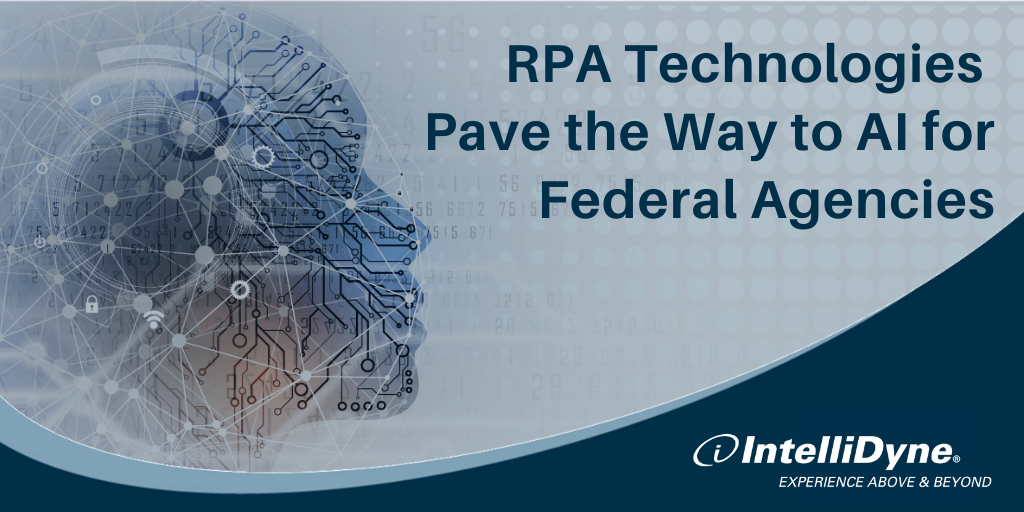By Phil Vincenzes, Chief Analytics Officer
The Road to AI through RPA
In 2019, we saw agencies beginning to experiment with robotic process automation (RPA) and score some big wins. RPA can enable the automation of many of your organization’s vast number of manual, rules-based processes.
How are federal agencies integrating RPA into their IT systems? Here are some examples:
- GSA launched an RPA community of practice (CoP). GSA said that the new CoP will “allow Federal government leaders to explore opportunities, share ideas, and collaborate on how RPA can be effectively implemented in their respective agencies.”
- The Defense Logistics Agency has made ground-breaking efforts to allow unattended bots to work 24/7, with dozens in operation in 2019.
- The Defense Counterintelligence and Security Agency (formerly the NBIB and DSS) achieved a massive 60% backlog reduction in background investigations using process automation. This was an achievement that Kari Bingen, principal deputy undersecretary of Defense for intelligence, was “proud to announce” last year.
Even though a recent estimate only puts the number of bots across the government at around 1,000, it’s encouraging that we are now seeing momentum in this area. While some are critical of RPA, discounting it as not “true AI,” it is important to note that RPA can be an important component of most larger, end-to-end processes – processes that yield Intelligent Automation.
As we have stated about Robotic Process Automation at IntelliDyne, “bots are capable of performing simple to complex repetitive data entry or data movement tasks and business processes with 100% accuracy.” The fact is that the development and integration of RPA in federal agencies is achievable now, not in the distant future. RPA serves as an important step in integrating AI into agencies in the future, helping to meet the goals stated in White House’s memorandum to heads of executive departments and agencies, “FY 2020 Administration Research and Development Budget Priorities”:
“Agencies should invest in fundamental and applied AI research, including machine learning, autonomous systems, and applications at the human-technology frontier.”
RPA and AI are Complementary Systems
AI technologies that augment and mimic human judgement and behavior are complementary to RPA technologies that replicate rules-based human actions. So, whether you believe that RPA is AI or not, it is clear that real gains in government productivity will occur when these two are working together. Chris Huff, strategy officer at Kofax, says it correctly: “The two technologies work hand in glove, just like traditional ‘white-collar’ knowledge-based workers and ‘blue-collar’ service-based workers collaborate as the engine to drive productivity for an organization.”
RPA Combined with Analytics Can Produce Streamlined Results
Robotic process automation can be useful beyond managing repetitive, rules-based tasks. At IntelliDyne, we have found that when RPA is combined with a robust analytics integration, technologies can deliver insights that help agencies perform and serve their mission better. With data analytics and visualization linked to RPA processes, agencies can better understand the status and other important performance metrics via RPA performance dashboards. We help re-engineer and improve business processes to further streamline and reduce related time and labor costs.
Want more information on RPA? This Fedscoop article expands on the topics discussed above: 2019 in Review: Agencies Embrace RPA — AI Less So

